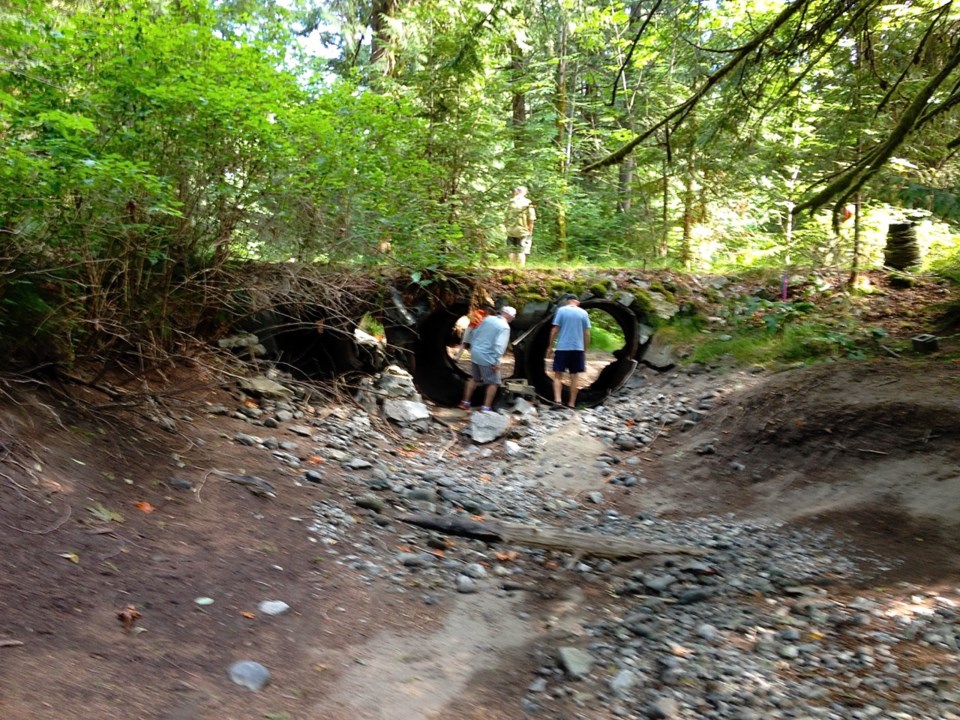Squamish needs some rain, and pronto.
It has been record-breaking hot and dry of late, depleting the local water supply and making the corridor vulnerable to forest fires.
This June was the hottest and driest since records were first kept back in 1979, according to Environment Canada meteorologist Matt MacDonald.
The average temperature in June was 19 Celsius; normal is 15.2C.
July has already been record-breaking. July 2 was a cooker at 34.5C, smashing the 1985 record of 29.6C.
“We get heat waves every summer on the coast, but to see them at the end of June and the beginning of July is, I’d say, three or four weeks ahead of schedule,” said MacDonald.
Squamish isn’t alone. The entire south coast of B.C. is experiencing a hot and unprecedentedly dry summer.
There won’t be a reprieve anytime soon, he added. “The outlook looks warm and dry with temperatures of eight to 10 degrees above normal and unfortunately, no precipitation in sight.”
The warm weather is due in part to a “blob” of warmer water about 1,000 km by 1,000 km wide and 100 metres deep sitting 200 km off shore of Vancouver Island; it is about three or four degrees warmer than normal, MacDonald said. The warmer mass of water injects the atmosphere with an amount of heat, and because the weather comes in from the west, those warmer-than-normal air masses make their way onto land and create warmer conditions.
This blob has developed over the past two winters, MacDonald said.
“We haven’t had stormy winters for the last two winters… and the storms act to increase the winds which builds waves and mixes the waters and creates upwelling, but with these lack of storms the winds have been lesser, the upwelling hasn’t been as pronounced, so we haven’t seen that replenishing of the cool ocean water at the surface. This huge blob has gradually strengthened and increased in size,” he said.
In addition to being hot, it has been dry in Squamish.
Squamish received 13 per cent of the usual amount of precipitation in June, MacDonald said. There was 11 mm of rain for the month, whereas the average is 86mm.
“That was on the heels of a very dry May as well,” he said. In May the district saw 22.5 mm, the normal is 106 mm.
MacDonald said Squamish residents need to ensure they adhere to district water restrictions.
“Along the coast we depend on a lot of our water supply from melting snow, but because there wasn’t much snow this spring the freshet – which is the snow melting season – was four to six weeks ahead of schedule,” MacDonald said.
“By the beginning of June we had already depleted a lot of the snow pack in the mountains and the rivers were already quite dry. Add to that now two near record-breaking months of [low] precipitation, and the situation is just exacerbated.”
MacDonald said there are currently perfect conditions for forest fires; lack of precipitation, warmer than normal conditions and bouts of dry lightening episodes to spark things up.
“Things are so tinder, I think you look at a tree the wrong way and it will just self combust,” he said.
The drier weather has been caused by a blocking ridge pattern, according to MacDonald. “The jet stream typically meanders in ridges and troughs and these waves, like the waves in a river or the waves in the ocean, of high pressure and low pressure usually propagate from west to east, but for the last two or three months we have been stuck under this blocking ridge of high pressure that doesn’t want to budge.”
For information on the district’s water restrictions, go online to squamish.ca.



